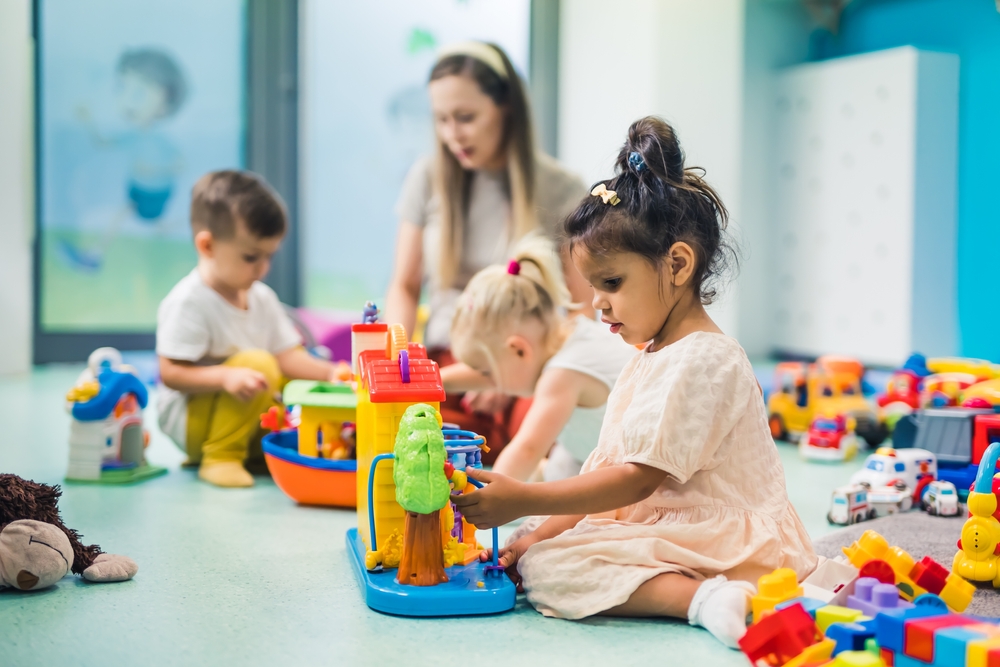
Choosing the right preschool is a significant milestone in your child’s early development and education. As a parent, you want to ensure your child is placed in an environment where they will be nurtured, challenged, and encouraged to grow. However, with the abundance of choices available, it can be overwhelming to make the right decision. To simplify the process, here is a comprehensive guide to help you choose the best preschool for your child.
Understand Your Family’s Needs and Priorities
The first step in selecting the right preschool is identifying your family’s specific needs and priorities. Different families may have varying factors that matter most to them.
Location and Accessibility
Consider how close the preschool is to your home or workplace. A convenient location can make drop-offs and pick-ups more manageable, especially if you have a busy schedule. Additionally, consider traffic patterns and commute times during peak hours.
Budget
Preschools vary significantly in cost. Determine your budget early in the process and find programs that align with what you can afford. Some preschools offer scholarships or financial aid, so it’s worth asking about potential financial assistance.
Schedule and Hours
Some preschools offer half-day programs, while others provide full-day options. Consider your family’s schedule and determine which option works best for you. If you need extended care before or after regular hours, inquire if the preschool offers this service.
Research Preschool Programs
Once you have established your priorities, begin researching preschools in your area.
Educational Philosophy
Preschools often follow specific educational philosophies, which can influence their teaching style and classroom environment. Here are a few common approaches:
- Montessori: Focuses on child-led learning and hands-on activities.
- Reggio Emilia: Emphasizes creativity, collaboration, and project-based learning.
- Waldorf: Prioritizes imagination, artistic expression, and outdoor play.
- Traditional: Follows a more structured, teacher-led approach.
Understanding these philosophies will help you decide which environment aligns with your child’s learning style and your values.
Accreditation and Licensing
Verify that the preschool is licensed by the appropriate regulatory body in your state or country. Accreditation from organizations like the National Association for the Education of Young Children (NAEYC) is an added benefit, as it indicates the school meets high-quality standards for early childhood education.
Visit Preschools and Observe
One of the most important steps in the decision-making process is visiting potential preschools. Observing the environment firsthand allows you to see if the preschool meets your expectations.
Classroom Environment
Pay attention to the classroom layout and cleanliness. A well-organized and engaging classroom should have a variety of age-appropriate materials, cozy reading nooks, and dedicated spaces for different types of play, such as creative arts and building blocks.
Teacher-Child Interaction
Observe how teachers interact with the children. Are they warm, attentive, and encouraging? Do they get down to the child’s level when speaking to them? Positive teacher-child interactions are essential for fostering trust and emotional development.
Safety and Security
Ensure that the preschool has robust safety protocols in place. Check for secured entrances, safe playground equipment, and a clear plan for emergencies. Additionally, inquire about their health policies regarding illnesses and hygiene.
Assess the Curriculum and Daily Routine
A strong preschool curriculum should balance academic readiness, social development, and play-based learning.
Learning Activities
Ask about the types of learning activities offered. Activities should be engaging and varied, including storytelling, group discussions, sensory play, and music. These activities help develop language skills, cognitive abilities, and motor coordination.
Outdoor Time and Physical Activity
Outdoor play is crucial for physical development and mental well-being. Inquire how often children have access to outdoor activities and whether they have structured physical play as part of their routine.
Social-Emotional Learning
Preschools should also focus on social-emotional development by teaching children how to manage emotions, build friendships, and resolve conflicts. Programs that include group activities and collaborative projects help children develop these skills.
Teacher Qualifications and Student-Teacher Ratio
The quality of the teachers and the classroom dynamics significantly influence the preschool experience.
Teacher Training and Credentials
Inquire about the teachers’ qualifications, such as degrees in early childhood education or related fields. Ask whether teachers participate in ongoing professional development to stay updated with best practices in early education.
Student-Teacher Ratio
The student-teacher ratio is a critical factor in ensuring your child receives adequate attention and guidance. Lower ratios allow teachers to give individualized support and create a nurturing learning environment.
Consider Parent Involvement and Communication
Effective communication and opportunities for parent involvement can strengthen your relationship with the preschool and provide valuable insights into your child’s progress.
Parent-Teacher Communication
Ask how the preschool communicates with parents. Do they provide regular updates through newsletters, apps, or meetings? Frequent communication helps you stay informed about classroom activities and your child’s development.
Opportunities for Involvement
Some preschools encourage parents to participate in activities, such as field trips, reading sessions, or special events. Determine whether you prefer a preschool that fosters a community atmosphere with active parent involvement.
Trust Your Instincts
Finally, trust your intuition. After visiting and researching preschools, you may find that one option stands out. Consider how you felt during your visit. Did the preschool feel welcoming? Did you notice children who seemed happy and engaged? These observations, combined with your research, will guide you to the right decision.
Prepare for the Transition
Once you’ve chosen a preschool, it’s important to help your child prepare for this new experience.
Gradual Introduction
Talk to your child about what to expect in preschool. Read books about starting school and visit the preschool together if possible. Some schools offer orientation days where children can meet their teachers and classmates.
Establish Routines
Create a consistent morning and bedtime routine to help your child adjust to the new schedule. Consistency provides a sense of security and helps reduce anxiety.
Encourage Independence
Teach your child simple self-help skills, such as putting on their shoes, washing their hands, and tidying up their belongings. Encouraging independence will boost their confidence as they enter a new environment.
Conclusion
Choosing the best preschool for your child involves thoughtful consideration of various factors, from location and educational philosophy to teacher qualifications and classroom environment. By conducting thorough research, visiting preschools, and trusting your instincts, you can make an informed decision that sets your child up for a successful and enjoyable early learning experience. Remember that this process is not just about academics—it’s about finding a place where your child will feel safe, supported, and excited to learn.

